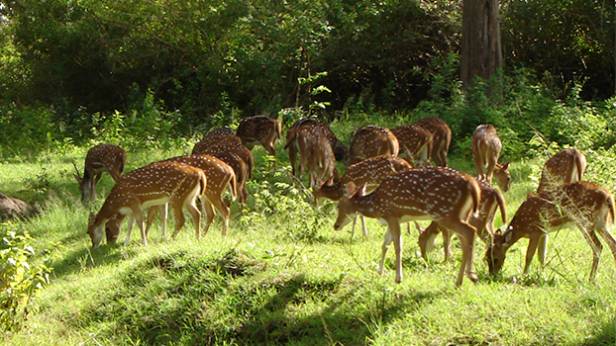Wildlife Poaching Doubles In Country During Lockdown

Wildlife poachers in the country have used the situation arising out of the coronavirus pandemic to their advantage. While the authorities were busy combating the pandemic, these poachers were stealthily increasing their criminal activities in the jungles.
According to a report released by TRAFFIC India with support from World Wildlife Fund (WWF) India, the incidents of poaching for consumption and local trade have more than doubled during the lockdown. This has happened despite consistent efforts by the law enforcement agencies to curb poaching, while clearly pointing out that hte wild animal population in India is under additional threat during the lockdown period.
Twenty two persons were arrested in poaching-related cases by various law enforcement agencies across the country during this period. This is significantly higher than the 85 suspects arrested during the pre-lockdown phase.
Leopard poaching increased during the lockdown period. As many as nine leopards were reported to have been killed compared to four in the pre-lockdown period.
The wildlife trade monitoring network TRAFFIC, is a leading non-governmental organisation working globally on trade in wild animals and plants in the context of both biodiversity conservation and sustainable development.
In India, TRAFFIC operates as a programme division of WWF India, the largest conservation organisation in the country.
However there was no evidence of stockpiling of wildlife products for future trade, the report added.
This increase in poaching was noticed uniformly throughout the country and not restricted to any geographical region or state or to any specific wildlife area.
The analysis was carried out by comparing media reported instances of poaching during the six week pre-lockdown period (February 10 to March 22, 2020) with those from six weeks of hte lockdown (March 23 to May 3, 2020).
The report, “Indian Wildlife Amidst The COVID-19 Crisis: An Analysis Of Poaching And Illegal Wildlife Trade Trends,” pointed out that the overall poaching incidences rose from 35 to 88.
According to the report, the highest increase in poaching was reported to be of Ungulates, mainly for their meat. The second group, which showed a marked increase was poaching of “small mammals” including hares, porcupines, pangolins, giant squirrels, civets, monkeys, smaller wild cats.
Although some have always been in high demand in international markets, most hunting during the lockdown period is presumably for meat or for local trade.
From six cases in the pre lockdown period, the number rose to 222 during the lockdown period.
Interestingly, incidences related to wild pet-bird seizures nearly halved from 14 percent to 7 percent between the pre-lockdown and lockdown periods probably due to a lack of transport and closed markets.
However, larger birds such as Indian Peafowls and game birds such as Grey Francolins, consumed for their meat, were targeted during the lockdown.
There was less reporting of poaching and illegal trade in tortoises and freshwater turtles, with almost no seizures of these species during the lockdown period.
According to Dr Saket Badola, Head of TRAFFIC’s India Office, “ The reason for the sudden spurt in the poaching seems to be because of the increase in the number of villagers staying close to the vicinity of jungles being jobless, entering the forest area in search of meat and also to make quick money.”
“The more than doubling of reported poaching cases, mainly of Ungulates and small wild animals for meat, is doubtless placing additional burden on wildlife law enforcement agencies. Therefore, it is imperative that these agencies are supported adequately and in a timely manner so that they can control the situation”, he added.

Comments are closed.